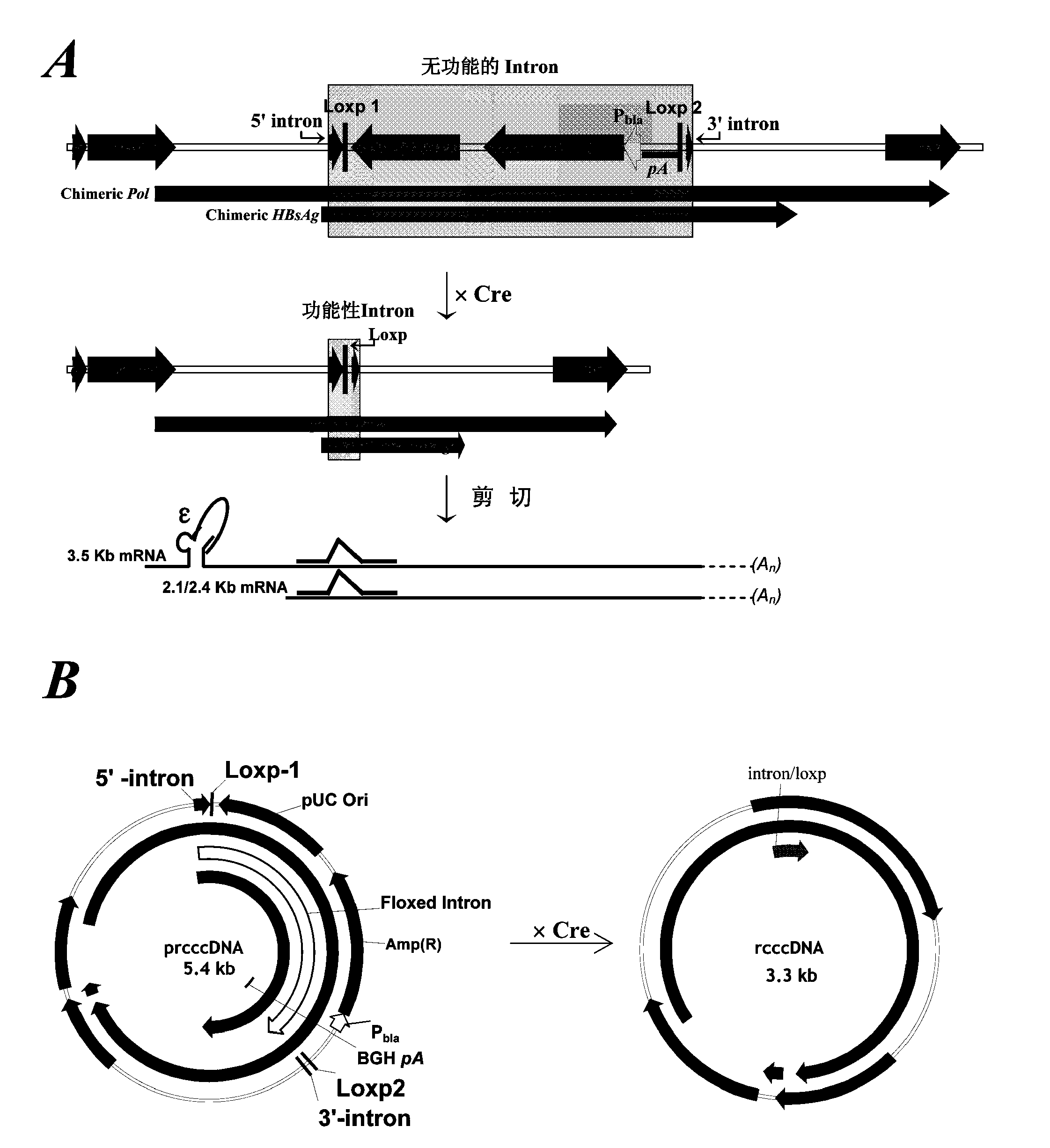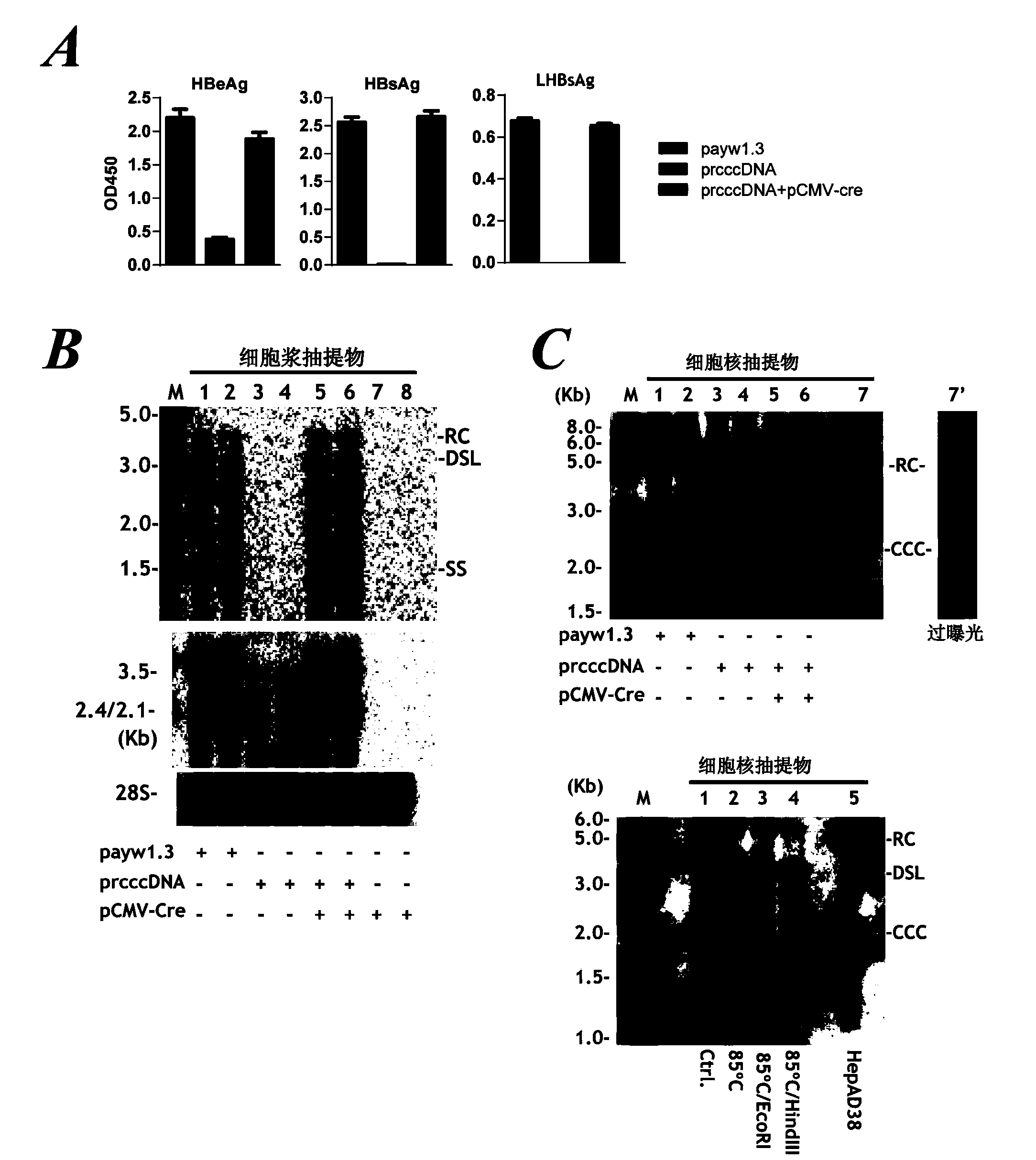Reagent and method for preparation of HBV persistently infected animal model
A technology for constructing and replicating sequences, which is applied in the fields of biotechnology and virology, and can solve problems such as complex systems, PCR quantitative methods not widely accepted, and difficulty in forming cccDNA
- Summary
- Abstract
- Description
- Claims
- Application Information
AI Technical Summary
Problems solved by technology
Method used
Image
Examples
preparation example Construction
[0088] Preparation of animal models or cell models
[0089] After the transgenic construct is obtained, cells, such as hepatocytes, can be transfected with the construct or an expression vector containing the construct by conventional methods. Transformation of host cells with recombinant DNA can be performed using conventional techniques well known to those skilled in the art, such as microinjection, electroporation, and the like.
[0090] The constructs or expression vectors containing the constructs can also be used to transfect animals, such as mice. As a preferred mode of the present invention, the construct or the expression vector containing the construct is transfected into non-human mammals by means of tail vein high pressure injection
[0091] The non-human mammals of the present invention can be mice, sheep, cows, pigs, rabbits, and the like. Preferred are mice, including mice, rats or other types of mice.
Embodiment 1
[0124] Example 1. Molecular biological model of Cre-induced rcccDNA
[0125] The HBV genome is about 3.2Kb, which is extremely compact, and even overlaps multiple reading frames in some regions. It is worth noting that there are some cryptic RNA splicing sites in the HBV genome transcription process, and the possible biological significance is not clear. The inventors inserted a hybrid intron sequence (chimeric Intron) between the HBsAg coding frame nt202-203 of the HBV wild virus genome (ayw3 subtype): including 5'Intron, LoxP-1, the basic sequence of plasmid replication pUC Ori, antibiotic selection gene (Amp(R)), eukaryotic gene tailing signal (polyA processing site), LoxP-2, and 3'Intron.
[0126] In the case of non-induction by recombinase Cre, due to the introduction of the eukaryotic gene tailing signal, the transcription initiated by the HBV upstream promoter is terminated within the hybrid intron sequence, and the HBV genome is blocked and cannot be produced. Virus ...
Embodiment 2
[0132] Example 2. Expression and viral replication of rcccDNA based on recombinase Cre
[0133] Based on the strategies discussed in the Examples, the inventors constructed prcccDNA ( figure 1 B). HepG2 cells were transfected in vitro with prcccDNA and recombinant Cre expression plasmid (pCMV-Cre). The same cells transfected with payw1.3 and prcccDNA alone were used as controls. The presence of HBV secreted antigens was detected by conventional enzyme-linked immunosorbent assay (ELISA).
[0134] As a result, the HBV secreted antigens HBeAg, HBsAg and LHBsAg were detected in the culture supernatant of HepG2 cells after transfection ( figure 2 A). However, in the culture medium of cells transfected with prcccDNA alone, both HBsAg and LHBsAg were negative. This experiment confirmed that the built-in LoxP hybrid intron can be efficiently transcribed and spliced in the HBV genome.
[0135] Further, the present inventors applied the above in vitro transfection experiments t...
PUM
 Login to View More
Login to View More Abstract
Description
Claims
Application Information
 Login to View More
Login to View More - R&D
- Intellectual Property
- Life Sciences
- Materials
- Tech Scout
- Unparalleled Data Quality
- Higher Quality Content
- 60% Fewer Hallucinations
Browse by: Latest US Patents, China's latest patents, Technical Efficacy Thesaurus, Application Domain, Technology Topic, Popular Technical Reports.
© 2025 PatSnap. All rights reserved.Legal|Privacy policy|Modern Slavery Act Transparency Statement|Sitemap|About US| Contact US: help@patsnap.com



